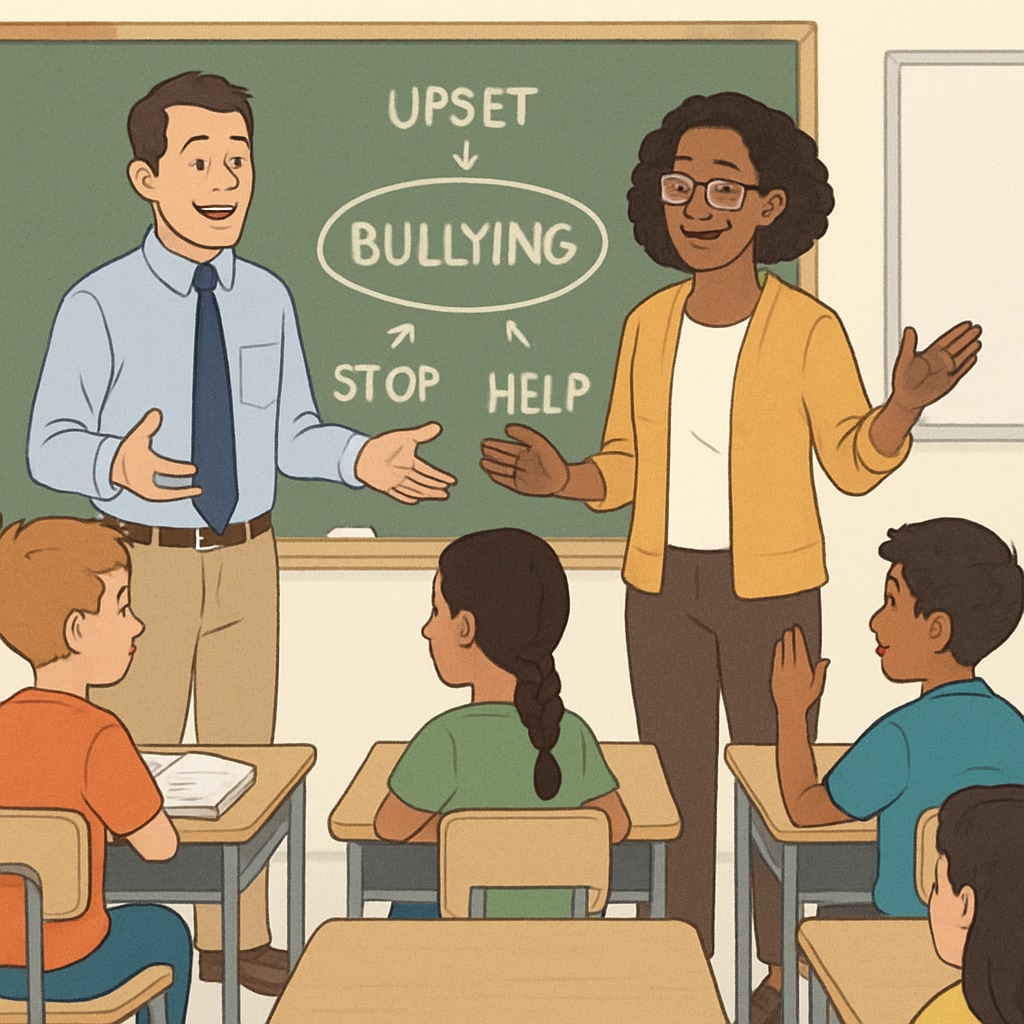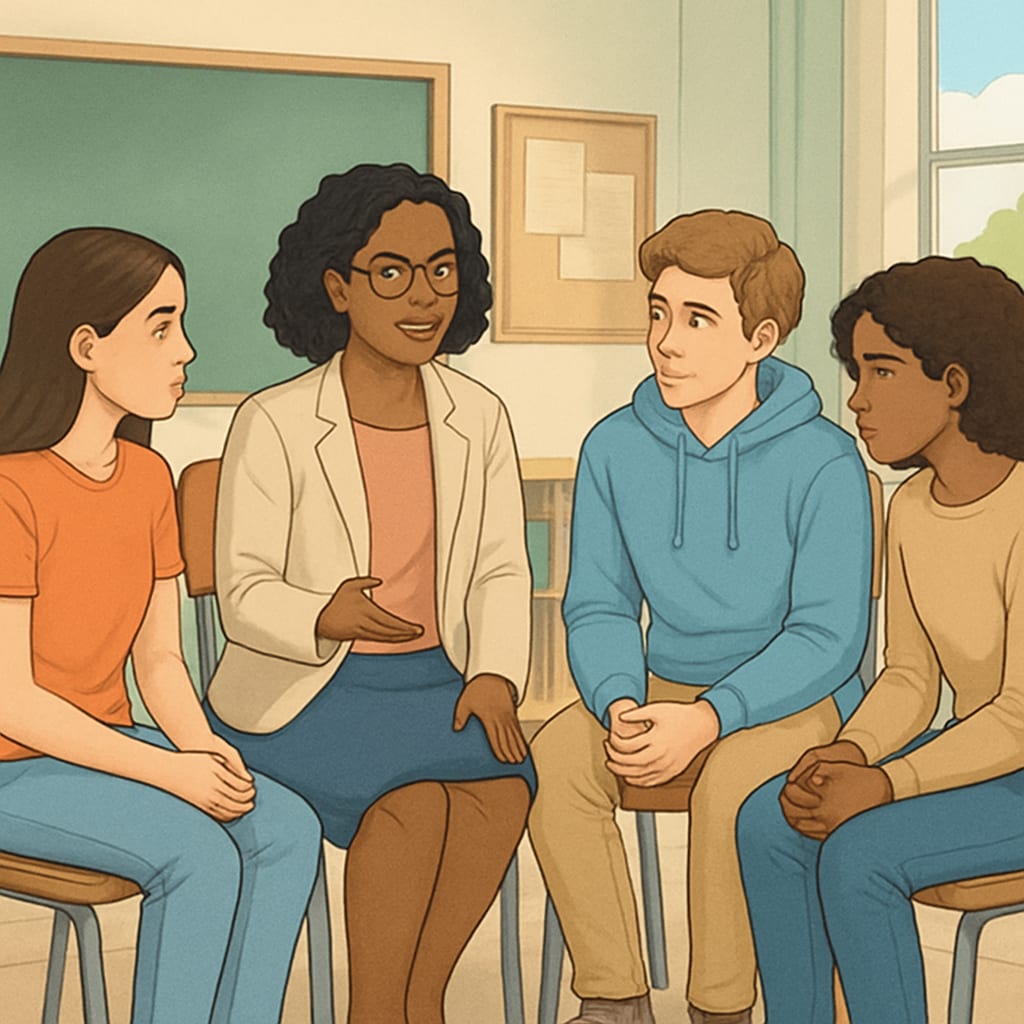School bullying, handling strategies, and consequence mechanisms have become pressing concerns in today’s K12 education systems. Addressing this issue requires a nuanced understanding of what constitutes bullying versus normal developmental conflict, alongside implementing structured and educational intervention mechanisms. In this article, we explore the boundaries of bullying behavior and propose strategies that ensure a balanced approach to protect victims while fostering opportunities for behavioral change among perpetrators.
Defining the Boundaries of School Bullying
Understanding and identifying school bullying is critical to addressing it effectively. Bullying differs from regular peer conflict in its repetitive nature, intent to harm, and imbalance of power. According to Bullying on Wikipedia, it involves actions that are deliberate, persistent, and aim to intimidate or control another individual. Recognizing this distinction ensures educators and administrators can intervene appropriately without mislabeling typical childhood disagreements.
Key indicators of bullying include:
- Repeated acts of aggression (verbal, physical, or emotional).
- An evident imbalance of power (age, size, social status).
- Intentional behavior aimed at causing harm or distress.
For example, a one-time argument between peers may fall under the category of conflict resolution, whereas repeated verbal abuse targeting a vulnerable student constitutes bullying. Schools must train staff to correctly identify these behaviors to avoid either underestimating or overstating the problem.

Effective Strategies for Handling School Bullying
Once bullying is identified, schools need a robust mechanism to address it. Effective strategies should incorporate both immediate intervention and long-term educational approaches. Reactive measures, such as separating the victim and perpetrator, are essential but insufficient without addressing the root causes of bullying behavior.
Recommended strategies include:
- Immediate Intervention: Staff must act promptly to stop bullying incidents and provide immediate support to the victim.
- Educational Consequences: Instead of solely punitive measures, schools should introduce programs that teach empathy, emotional regulation, and conflict resolution skills to perpetrators.
- Victim Support Systems: Counseling and peer support groups can help victims rebuild confidence and resilience.
- Parental Involvement: Engaging parents in discussions ensures consistent reinforcement of anti-bullying values at home.
For example, implementing restorative justice practices—where perpetrators and victims engage in guided dialogue—can help rebuild trust and reduce repeat incidents. Studies from Restorative Justice on Britannica highlight its effectiveness in addressing behavioral issues while fostering accountability and empathy.

Building a Multi-Level Consequence Mechanism
Schools must develop a tiered consequence mechanism that balances protection for victims and rehabilitation opportunities for perpetrators. This mechanism should be educational in nature, focusing on behavioral improvement rather than solely punishment.
Components of a multi-level consequence system include:
- Level 1: Verbal warning and documentation for minor incidents.
- Level 2: Mandatory participation in anti-bullying workshops or counseling sessions.
- Level 3: Formal disciplinary action for repeated or severe bullying cases.
- Level 4: Referral to external support services, such as therapists or behavioral specialists, for chronic offenders.
In addition, schools should create clear policies that define bullying behaviors, outline consequences, and establish reporting procedures. Transparency in these policies encourages accountability among students and staff alike.
As a result, when schools adopt a structured approach to consequences, they not only protect victims but also provide perpetrators with the tools to change their behavior and reintegrate positively into the school community.
The Role of Education in Bullying Prevention
Education plays a pivotal role in preventing bullying before it happens. Schools should introduce age-appropriate anti-bullying curricula that teach core values such as respect, empathy, and inclusivity. Programs like role-playing activities and empathy exercises can help students understand the impact of their actions and develop stronger interpersonal skills.
In addition, promoting a culture of kindness and inclusivity through school-wide campaigns—such as anti-bullying awareness weeks—can reinforce positive behavior. Creating safe spaces for dialogue, such as student-led forums, empowers children to openly discuss their concerns and seek help when needed.
By combining proactive education with reactive strategies, schools can significantly reduce bullying incidents and create a safer, more supportive environment for all students.
Readability guidance: The article uses concise paragraphs, lists, and clear transitions to ensure a professional yet accessible tone. Keywords are distributed evenly across the content, avoiding over-optimization.


